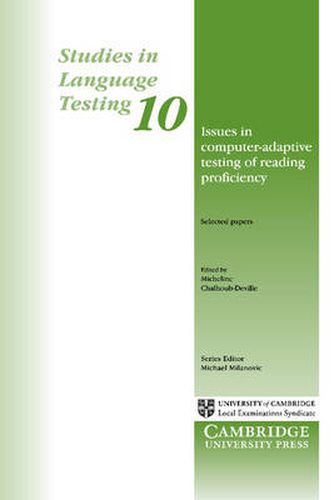Readings Newsletter
Become a Readings Member to make your shopping experience even easier.
Sign in or sign up for free!
You’re not far away from qualifying for FREE standard shipping within Australia
You’ve qualified for FREE standard shipping within Australia
The cart is loading…






Language testers are increasingly directing their attention to the development of computer-adaptive testing (CAT) instruments for assessing learners’ second language ability. Issues in Computer-Adaptive Testing of Reading Proficiency examines CAT instruments used to assess the receptive skills, with a strong focus on reading ability, as well as a critical discussion of CAT practices from the point of view of performance assessment. This volume is the first to adopt a multi-disciplinary approach and is written by leading scholars in their respective fields. The chapters are grouped into three major sections: second language reading constructs, second language CAT applications and considerations, and item response theory (IRT) measurement issues. To help the reader grasp the main points of these sections, discussion chapters are included after each one which summarize and examine the issues raised by the authors.
$9.00 standard shipping within Australia
FREE standard shipping within Australia for orders over $100.00
Express & International shipping calculated at checkout
Language testers are increasingly directing their attention to the development of computer-adaptive testing (CAT) instruments for assessing learners’ second language ability. Issues in Computer-Adaptive Testing of Reading Proficiency examines CAT instruments used to assess the receptive skills, with a strong focus on reading ability, as well as a critical discussion of CAT practices from the point of view of performance assessment. This volume is the first to adopt a multi-disciplinary approach and is written by leading scholars in their respective fields. The chapters are grouped into three major sections: second language reading constructs, second language CAT applications and considerations, and item response theory (IRT) measurement issues. To help the reader grasp the main points of these sections, discussion chapters are included after each one which summarize and examine the issues raised by the authors.